Document Collection for Condo and Coop Financing
Document collection is one of the most tedious aspects of purchase financing or refinancing a
Most home buyers finance their purchase, which means that their lender has to underwrite them as borrowers and the home as collateral. What many borrowers don’t realize is that most lenders underwrite according to guidelines set by the entity that they will sell the loan to on the secondary market. And when it comes to condominium units, that includes Fannie Mae.
Underwriting a condo unit isn’t like underwriting a single-family home. With a single-family home under Fannie Mae guidelines, the purchase of the asset is straightforward: the land and the structure(s) that sit on it. Assessing the value is simple and achieved using an appraisal.
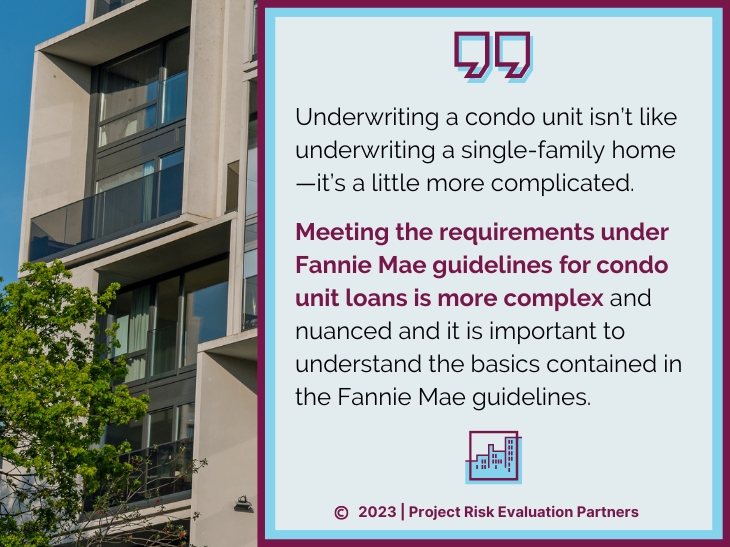
For condominiums, it’s a little more complicated. A condo unit has four walls, yes, but those four walls connect to the walls of other units. Condo units are part of a condominium project—each with their own unique characteristics and with common spaces and shared amenities. The condition, quality, and design of the project may all impact the lender underwriting process, requiring extra steps that single-family homes simply don’t require.
That’s why Fannie Mae guidelines aren’t the same as what you can expect if you are purchasing a single-family home. Meeting the requirements under Fannie Mae guidelines for condo unit loans is more complex and nuanced and it is important to understand the basics contained in the Fannie Mae guidelines.
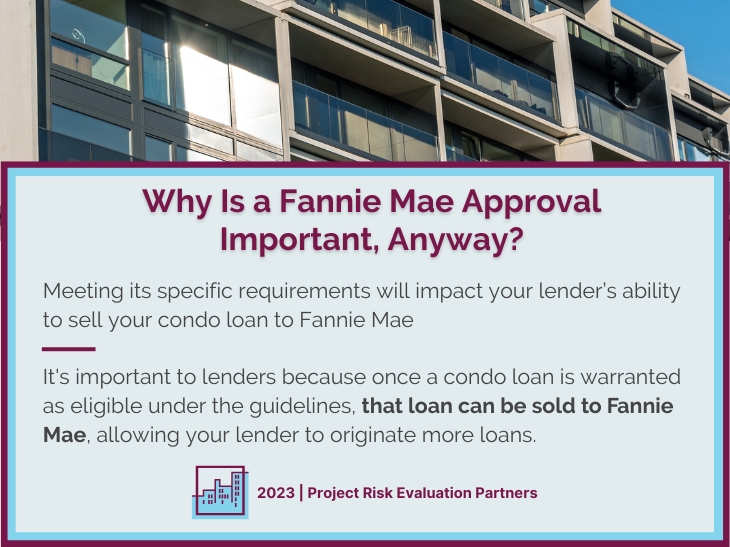
Let’s start with the fundamentals. Any loan that a lender intends to sell to the GSEs must meet specific requirements. Fannie Mae is one GSE—or Government Sponsored Enterprise—and meeting its specific requirements will impact your lender’s ability to sell your condo loan to Fannie Mae. This process is important to lenders because once a condo loan is warranted as eligible under the guidelines, that loan can be sold to Fannie Mae, allowing your lender to originate more loans.
For condo loan borrowers, the process can be a bit frustrating. Why can’t the Fannie Mae guidelines simply evaluate the condition of the condo, forget about the rest, and move on with the process? It’s not quite that simple. Let’s look at some of the elements that are significant parts of Fannie Mae guidelines
The process for determining Fannie Mae eligibility under its guidelines is determined through a review process. There are two types of reviews: limited and full reviews. The type of review generally comes down to the specific details of the condominium project.
For example, are 90% or more of the units sold and owner-occupied? That would be one of the criteria for the condo project being treated as an “established project,” which might be eligible for a limited review.
Do the condo unit owners control the association? If so, this too is another criteria of an “established project.
There are numerous other factors in Fannie Mae guidelines that determine whether a condo loan is subject to a limited or full review. Both, however, require an analysis of numerous and varied data points about the condo project. The basic difference between the two:
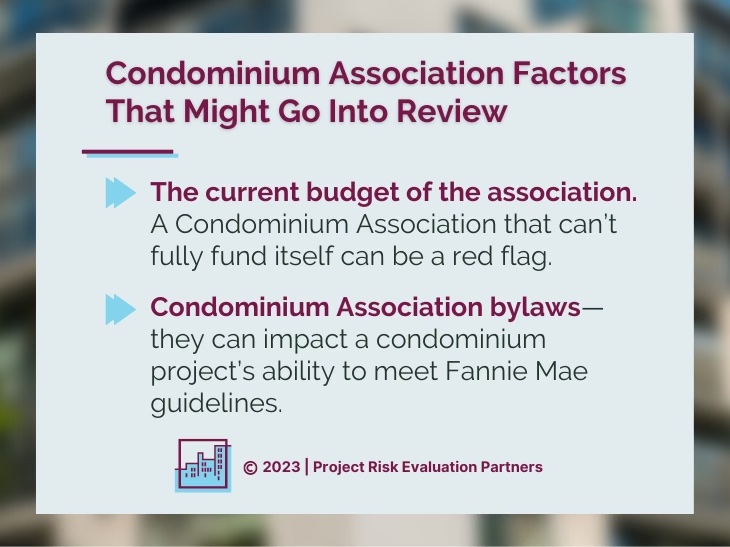
Before you finance a condo unit, make sure you have information about the Condominium Association or Homeowner’s Association. The Condominium Association is made up of the unit owners and is responsible for creating and enforcing the rules of a condominium project and is run by a board of directors. The Condominium Association collects fees to pay for common area maintenance as well as common amenities. How the Condominium Association runs the condo project could have a major impact on your bottom line. A Fannie Mae eligibility review takes a deep dive into multiple aspects of the Condominium Association.
For example, what funds are necessary to meet the ongoing maintenance of the project? How much of that money goes towards reserves? What major improvements are on the horizon? An Condominium Association that can’t fully fund itself can be a red flag.
Are there deed restrictions placed on the condo units in an Condominium Association, which limit how property can be used? Do the bylaws include a right of first refusal? The answers to these questions can impact a condominium project’s ability to meet Fannie Mae guidelines.
What are some conditions that automatically prohibit Fannie Mae eligibility? The following are some items that make a condominium project ineligible according to Fannie Mae guidelines:
These are just a few of the complex requirements that must be analyzed on condo unit loans to meet Fannie Mae guidelines. Project Risk Evaluation Partners wants you to understand this important aspect of condo loan origination so that you are better educated on this complex process that is an integral component of securing a condo loan. Managing client risk is our business. Contact us to find out what you need to know.
Document collection is one of the most tedious aspects of purchase financing or refinancing a
We are thrilled to announce that Project Risk Evaluation Partners was featured in an article
Insurance requirements for condos and coops have recently undergone significant changes, with Fannie Mae introducing
The tragedy of the Champlain Towers South collapse on June 24, 2021, in Surfside, Florida,
Importance of Loan Commitment in Condominium Unit Purchase When financing a condominium unit purchase, a
You may not have heard of them quite yet but consider this: the GSEs—government-sponsored enterprises—purchase,
The
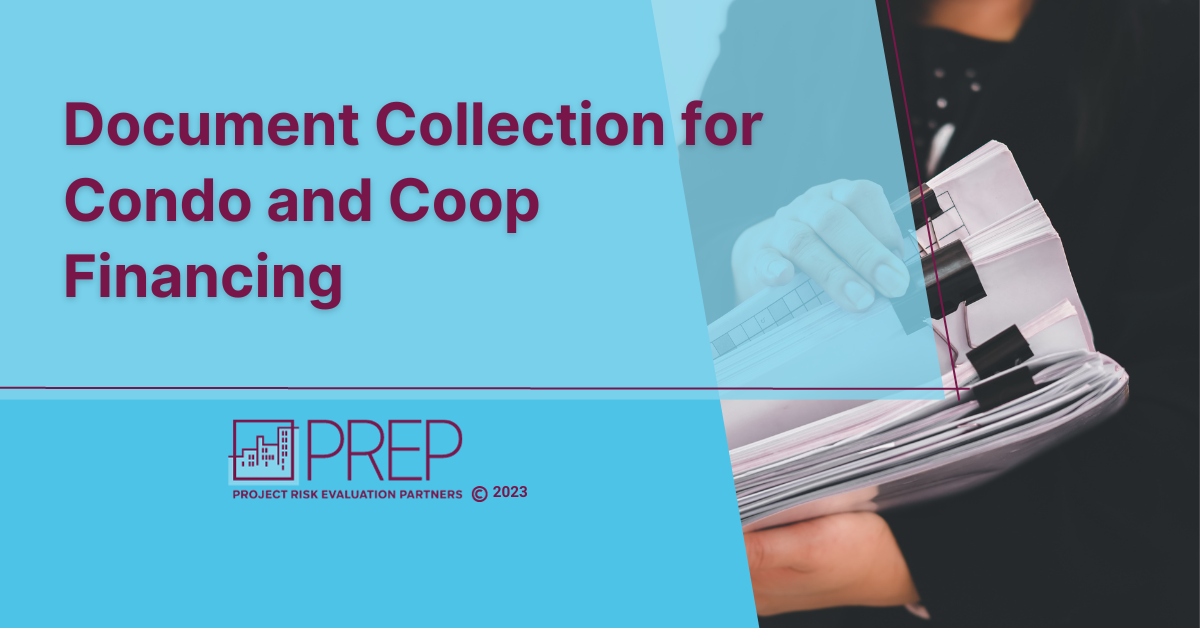
Document collection is one of the most tedious aspects of purchase financing or refinancing a condo or coop. It is also one of the most
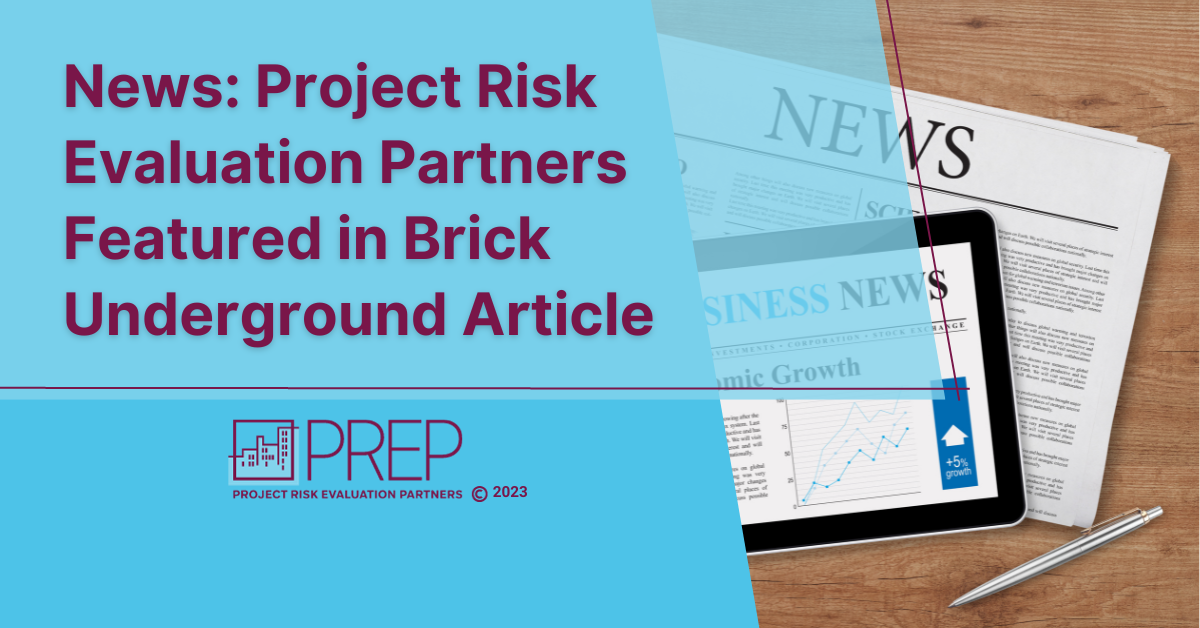
We are thrilled to announce that Project Risk Evaluation Partners was featured in an article by Jennifer White Karp on Brick Underground. The piece, titled “Here’s
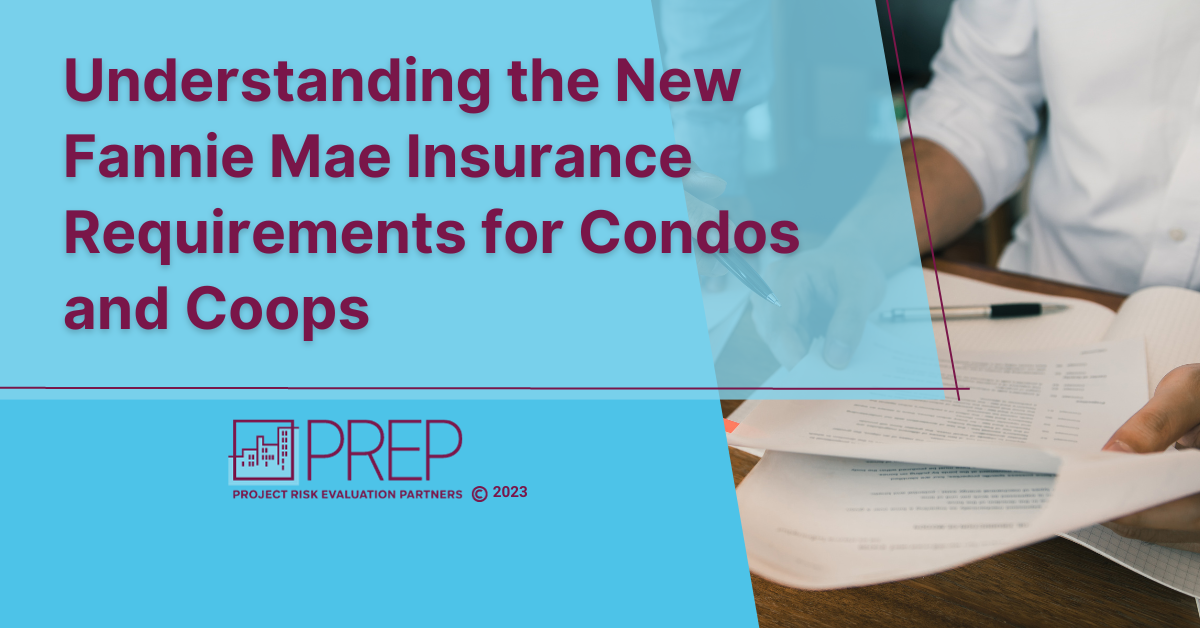
Insurance requirements for condos and coops have recently undergone significant changes, with Fannie Mae introducing a new level of detail that requires confirmation of certain
Stay up-to-date with issues important to the Mortgage Industry, Secondary Markets, Residential Lenders, Real Estate Brokers, Condominium and Cooperative Associations Developers, Buyers and Sellers.